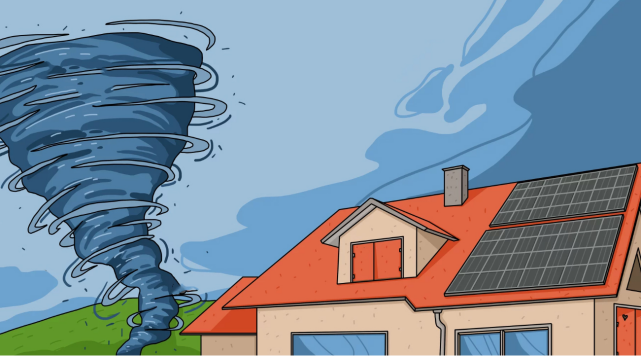In recent years, solar panels have grown in popularity as a sustainable and efficient energy source. However, concerns remain for people living in hurricane-prone areas about their durability and ability to withstand extreme weather conditions. The question on many people’s minds is clear — can solar panels survive hurricanes and other natural disasters?
Hurricanes are known for their destructive power, with wind speeds often exceeding 160 miles per hour. These strong winds can uproot trees, fly debris and cause widespread damage to infrastructure. In this context, one might understandably wonder whether the solar panels typically mounted on roofs can withstand such destructive forces.
Fortunately, the answer is yes. The solar panels are designed to be robust and resilient, able to withstand a variety of harsh weather conditions. Manufacturers take factors such as rain, snow, hail, and hurricanes into account during the design process, making sure the panels can withstand such events. This reassures homeowners who are considering investing in a solar system.
A key factor that contributes to the durability of a solar panel is its mounting system. These systems are designed to securely fasten the panels to the roof or ground, ensuring they remain stable in high winds. Brackets, bolts, and clamps were carefully selected to resist the forces of hurricanes and prevent the panels from shifting or being damaged.
Moreover, the materials used in the construction of solar panels are selected for their strength and resilience. Most panels are made of tempered glass, which is highly resistant to impact from hail or airborne debris. This tempered glass is specifically tested to withstand severe weather conditions, including those experienced during hurricanes.
To further safeguard against damage, solar panels are often subjected to rigorous testing procedures. These tests evaluate their ability to survive extreme wind speeds, hailstorms, and even simulated hurricane conditions. Only panels that pass these tests are deemed suitable for installation in areas prone to natural disasters.
In addition to their resilience, solar panels can also provide various benefits during and after a hurricane. Firstly, they can continue to generate electricity as long as sunlight is available, even if the power grid goes down. This can prove invaluable in ensuring access to essential appliances and devices during power outages.
Furthermore, solar panels can help reduce the strain on traditional power grids during post-hurricane recovery. By generating clean energy, homeowners with solar systems can ease the burden on power companies and contribute to a more efficient restoration of electricity services.
It is important to note that while solar panels can survive hurricanes, the overall structural integrity of homes should not be compromised. Adequate measures should be taken to fortify roofs and buildings to withstand the impact of hurricanes, regardless of whether solar panels are present. These precautionary steps include employing strong building materials, reinforcing attachments, and adhering to building codes and regulations.
In conclusion, solar panels are designed to withstand hurricane-force winds and other natural disasters. They are built using durable materials, and their mounting systems are designed to resist extreme weather conditions. These panels not only offer energy efficiency and sustainability benefits but can also provide a reliable source of electricity during and after a hurricane. Homeowners in hurricane-prone areas can confidently harness the power of solar energy while ensuring the durability and safety of their solar systems.
Post time: Jul-21-2023
